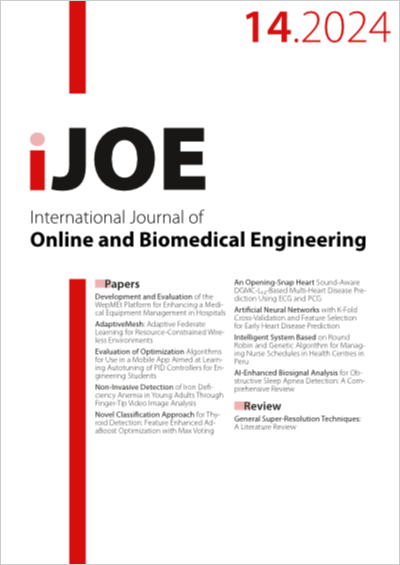AI-Enhanced Biosignal Analysis for Obstructive Sleep Apnea Detection: A Comprehensive Review
DOI:
https://doi.org/10.3991/ijoe.v20i14.50175Keywords:
, Obstructive sleep apnea (OSA), Algorithm in detection, Artificial InteliigenceAbstract
Obstructive sleep apnea (OSA) detection using single-lead electrocardiograms (ECGs) has advanced significantly with the integration of artificial intelligence (AI). This review explores how AI enhances feature extraction and machine learning algorithms to improve OSA detection. The RR interval in electrocardiographic data is particularly valued for its ease of identification and low error rate. We review a range of machine learning and deep learning techniques employed in OSA detection. This review offers insights into developing single-lead ECG-based OSA detection systems by analyzing database availability, feature extraction methods, and machine learning approaches.
Downloads
Published
How to Cite
Issue
Section
License
Copyright (c) 2024 Nuryani Nuryani, Aida Noor Indrawati1, Wiharto Wiharto, Diah Kurnia Mirawati

This work is licensed under a Creative Commons Attribution 4.0 International License.



